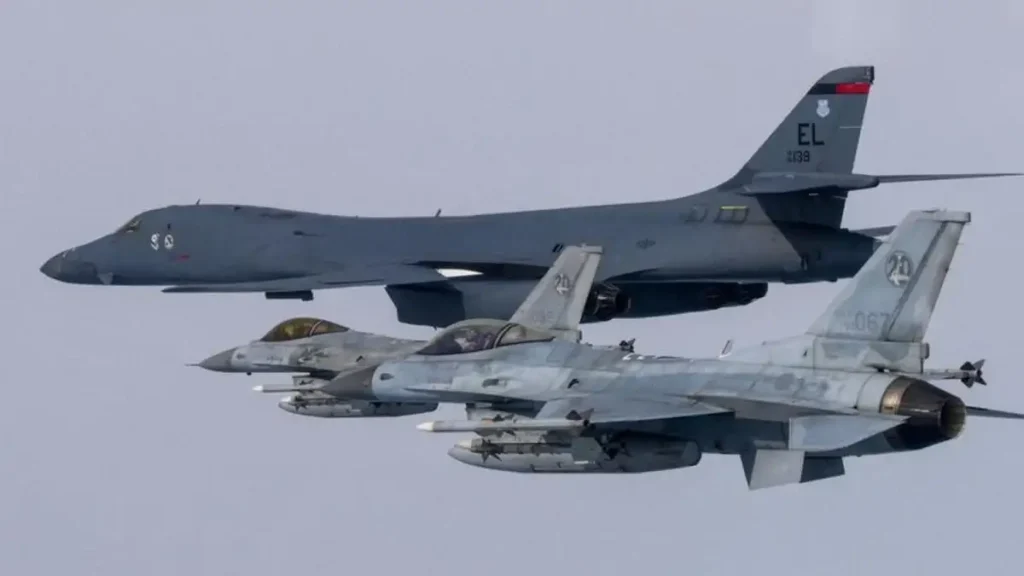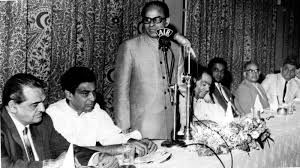North Korea Blasts US-South Korea Bomber Drill, Labels B-1B Deployment ‘Reckless Bluffing’
Seoul, April 17, 2025 — North Korea harshly criticized the United States for deploying a B-1B bomber during a joint military drill with South Korea. State-run media KCNA published the response on Thursday, describing the move as “reckless bluffing” and accusing Washington of heightening tensions in the region.

South Korea’s Ministry of National Defense said the drill took place on Tuesday and involved the B-1B bomber flying alongside fighter jets. According to officials in Seoul, the purpose was to strengthen readiness and improve coordination between the two allies in response to growing regional threats.
North Korea Condemns US Strategy
In its statement, a spokesperson from North Korea’s Ministry of National Defense argued that the United States routinely sends strategic bombers into the region to intimidate and provoke. The spokesperson insisted that this latest deployment crossed a line.
“This isn’t just training—it’s a deliberate provocation,” the official said. “Bringing the B-1B bomber into our airspace zone again proves their intentions are not peaceful.”
The statement warned that these drills could push North Korea to respond with “unpredictable actions.”
What the B-1B Bomber Signifies
The B-1B Lancer stands as a symbol of America’s air power. This long-range bomber carries a heavy conventional payload and can reach global targets at high speed. Although originally built for nuclear missions, the U.S. military now uses it for precision strikes and deterrence operations.
Over the past few years, the U.S. has frequently deployed B-1Bs to the Korean Peninsula, especially after North Korea’s missile launches. These deployments aim to show support for South Korea and deter aggression, but Pyongyang consistently views them as threats.
South Korea Defends the Drill
In response, South Korean officials emphasized the purely defensive nature of the drill. A spokesperson from the Ministry of National Defense explained that such joint operations help both countries remain prepared for real-world scenarios.
“These drills strengthen our alliance and ensure we can counter any aggression swiftly,” the spokesperson said. “They are not meant to provoke the North.”
Rising Tensions, Familiar Pattern
This week’s events reflect a familiar cycle of military muscle-flexing on both sides of the Korean Peninsula. Just weeks earlier, North Korea fired several short-range missiles into the sea, prompting warnings from the U.S. and its allies. In turn, the U.S. ramped up its aerial presence.
Dr. Hwang Joon-seok, a professor of international security at Korea University, pointed out the dangers of this pattern.
“Each move invites a counter-move. Every time the U.S. brings in a bomber, North Korea escalates. That rhythm creates more danger than security,” he said.
Stalled Talks and Mounting Risks
Diplomatic efforts between the U.S. and North Korea have stalled since the 2019 Hanoi summit collapsed. The Biden administration has occasionally offered talks, but North Korea demands concessions such as lifting sanctions and halting joint drills.
Pyongyang sees these exercises, especially ones involving powerful aircraft like the B-1B, as rehearsals for an invasion. Washington and Seoul maintain that these drills prepare forces to defend, not to attack.
Where Do Things Go From Here?
Experts warn that if both sides continue this tit-for-tat strategy, tensions could boil over. Without renewed dialogue, military posturing might increase and bring fresh instability to the region.
“North Korea will likely respond again—either with more missiles or threats,” said Dr. Kim Eun-ha, a Seoul-based security analyst. “Unless leaders make real efforts to ease the pressure, the risk of a bigger conflict grows.”
The B-1B may have completed its flight, but the political fallout continues. As each side digs in, the chance for peaceful resolution becomes harder to reach.






